The best chemistry experiments are those you can perform with items already laying around your house. With only some sugar, salt substitute and an instant cold pack, you can make your very own gunpowder! Being able to make homemade gunpowder without a trip to the store can be a lifesaver, no matter if it's just for testing out a Civil War-era musket, blowing up stubborn tree stumps, or preparing for battle when imperialists overrun your country.
Materials
- Instant cold pack
- Salt substitute
- Water
- Glass jars
- Coffee filters
- Scale that can measure grams
- Stove or hotplate

You might already have these chemicals in your cabinets or drawers.
Open Cold Pack
Cut off the top of your cold pack with scissors. Inside will be a packet of water surrounded by ammonium nitrate crystals. Only use packets clearly labeled as containing ammonium nitrate. Urea is a common substitute for ammonium nitrate in cold packs. Do not use urea.

Avoid cutting through the middle to keep from puncturing the bag of water inside.
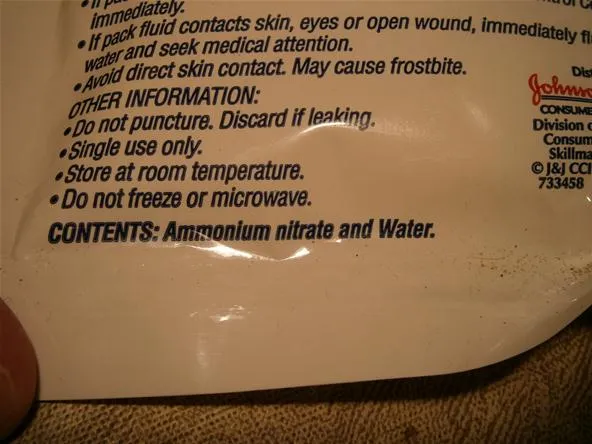
Make sure your cold pack contains ammonium nitrate and not urea.
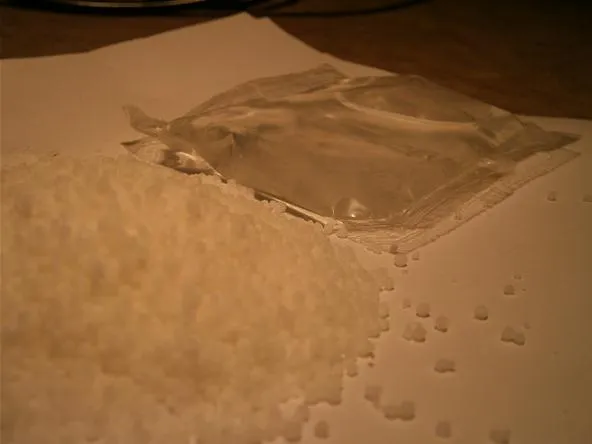
Cold packs demystified! It's just a bag of water surrounded by ammonium nitrate crystals.
Weigh Your Chemicals
Using a digital scale, weigh out 40 grams of ammonium nitrate and 37 grams of salt substitute. If you are like me and do not own a scale, you can make a simple balance beam using a lighter as a fulcrum and a ruler as the beam. I taped some component drawers to the ruler equidistant from the center marking to ensure they would exert equal force. Do your best to center the ruler.

My salt substitute came in an 88.5 gram bottle. I poured half of the bottle on each side of the balance beam so that I had two equal measurements of 44.25 grams. I then dumped out one of these and replaced the salt with the ammonium nitrate until I had a total of 44.25 grams for both substances. This is close enough for our purposes. Any excess of either chemical will simply not dissolve into our solution. The experiment will not be noticeably affected.

Above, 44.25 grams of salt in each container.
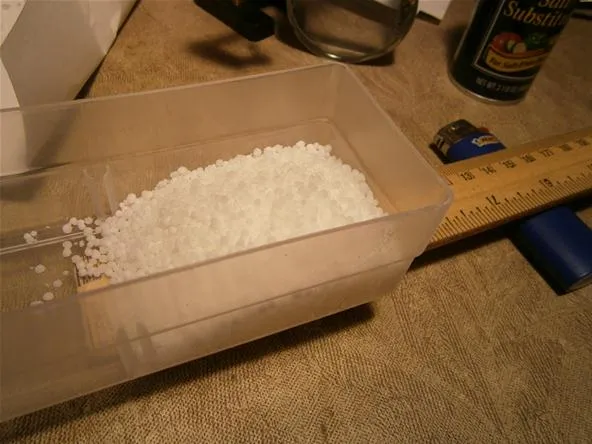
Above, 44.25 grams of ammonium nitrate.
Dissolve Ammonium Nitrate in Water
Mix the measured ammonium nitrate into 100ml of water. If you don't have a graduated cylinder, it's easy to approximate using empty drink bottles. I filled a 500ml water bottle approximately 20% with water and used that. Stir the solution until the ammonium nitrate is completely dissolved. It's okay if the water is cloudy, as long as there are no solid pieces.

The compulsive modernist urge to quantify and commodify means we can make lab instruments from trash.

Still cloudy, but it's okay as long as none of the beads remain at the bottom.
Add Solution to Salt Substitute
Pour your ammonium nitrate solution through a coffee filter directly into a container of salt substitute. Glass is always the best container material. I used a glass Pepsi bottle and an oil funnel. If you can't do it from junk, it's not worth doing.

Remember to add the salt substitute before pouring in the solution.
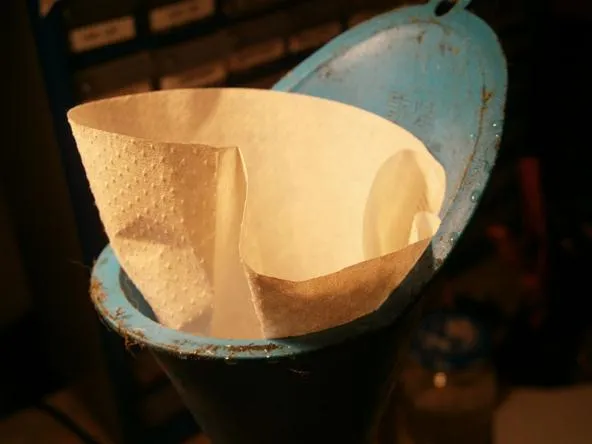
Coffee filters get any unwanted solids out of the solution.
Dissolve the Salt
Gently heat, but do not boil, your mixture while continuously stirring. A few minutes is all it takes for the solution to become noticeably clear with no particles remaining.

It is best to avoid using cookware when performing chemistry experiments.

Everything is nice and dissolved!
Chill
Place your fully mixed solution in the freezer for anywhere between a half-hour and two hours. Crystals will form on the bottom of the container. These crystals are potassium nitrate or saltpeter, the key ingredient in gunpowder. This is also available commercially as stump remover from your local hardware store. It is cheaper to buy stump remover, but in an emergency, using the cold pack is infinitely more James Bond.
Place the container so that it will not tip over.
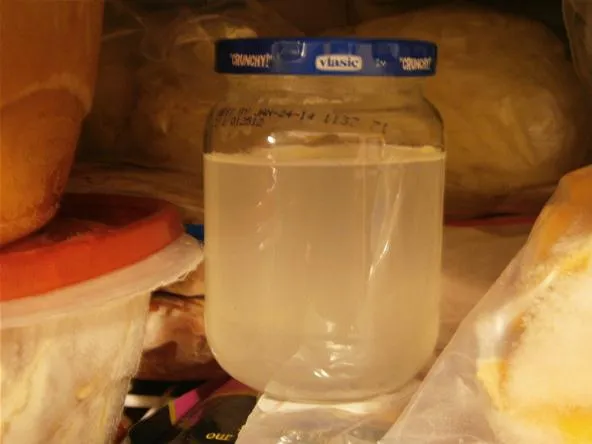
Crystals hiding beneath the liquid.

Crush Your Potassium Nitrate
Pour out the remaining liquid in the container without pouring out your crystals. Wait until the crystals have dried. Even though they look like rocks, in reality, they have the consistency of slush. Let the open container sit in a well-ventilated area. When dry, crush the crystals into a very fine powder. The chances of igniting the saltpeter are very low, but for safety's sake, this is best done in a non-metal container.
This is what your crystals should look like when you pour out the liquid:
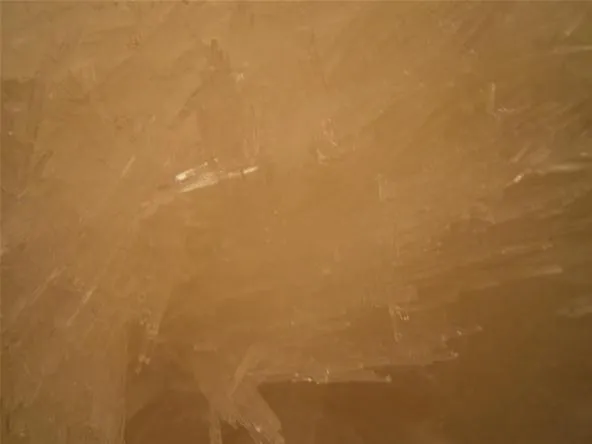
Add Sugar
Mix together one-part saltpeter with one-part powdered sugar. This will give you a crude form of gunpowder. Real gunpowder contains saltpeter, sulfur, and charcoal. However, this home recipe should be more than enough for all your pyromaniacal needs.
Saltpeter on the left, sugar on the right:
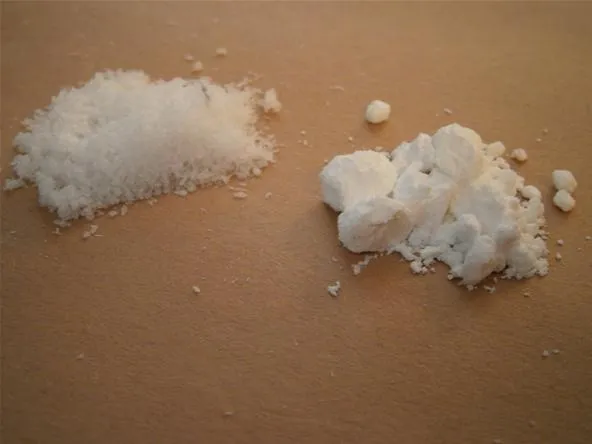
A well mixed flammable powder is a happy flammable powder.
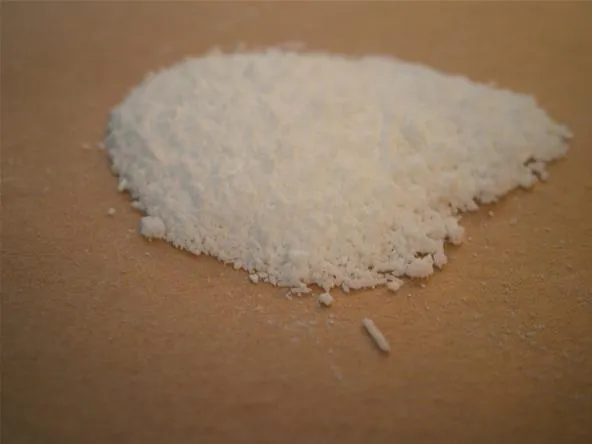
Test
Take a small spoonful of your gunpowder and place it on a nonflammable surface outdoors away from sentient creatures and trees. Light using a long match and revel in the power now at your command!
In making saltpeter, we combined ammonium nitrate from the cold pack with potassium chloride from the salt substitute. Chemically, the equation looks like this:
NH4NO3 + KCl -> KNO3 + NH4Cl
Essentially, what we are doing is switching around the compound words in the chemicals. We are inducing the two chemicals to exchange ions so that ammonium nitrate and potassium chloride become potassium nitrate and ammonium chloride. The potassium nitrate crystallizes while the ammonium chloride remains a liquid.
Try making a trail of gunpowder like in the cartoons. What kind of cool designs can you make? If you do this experiment at home, show it off!






















Comments
Be the first, drop a comment!